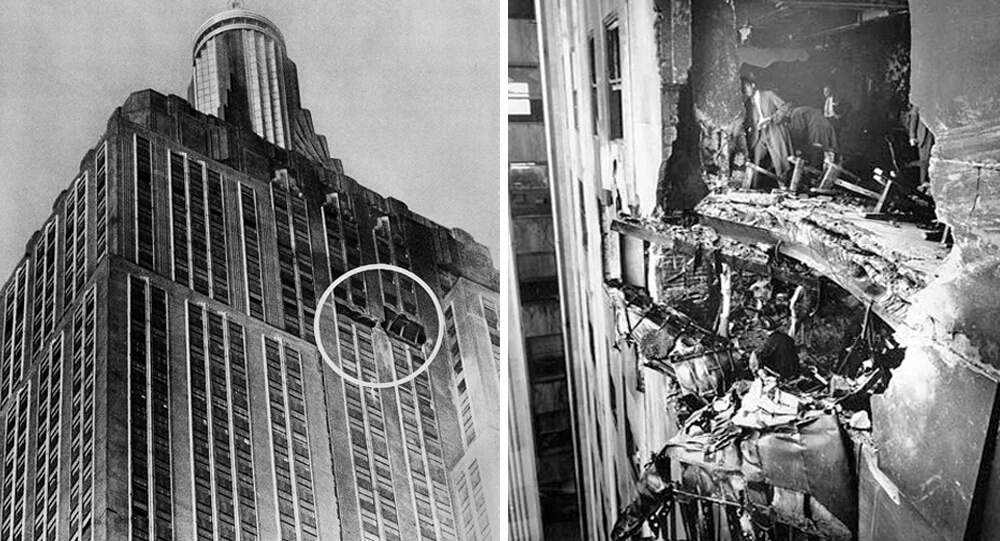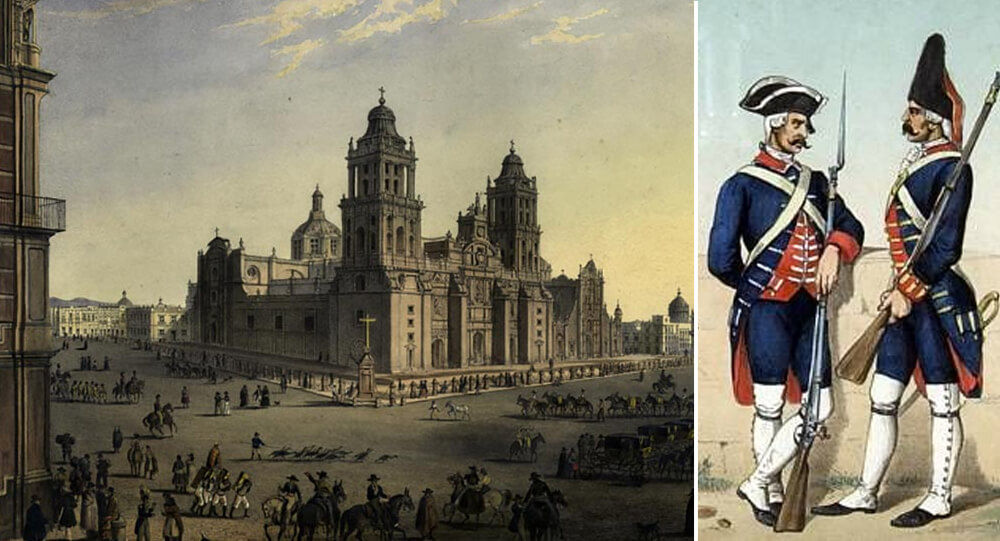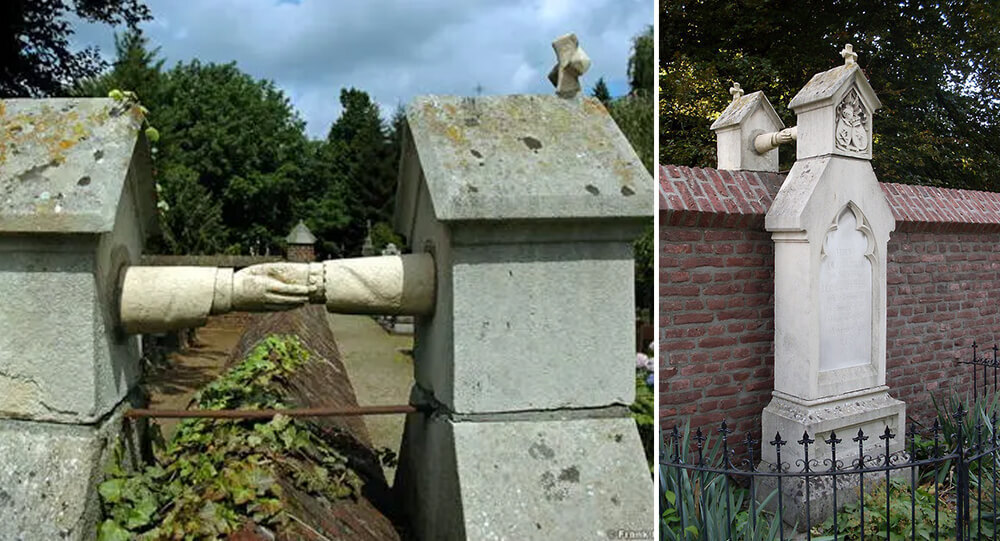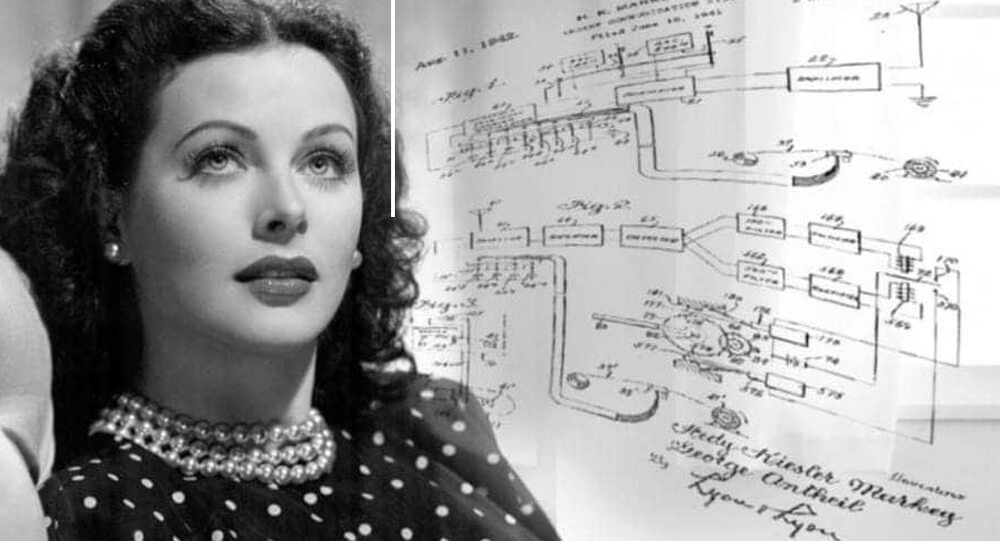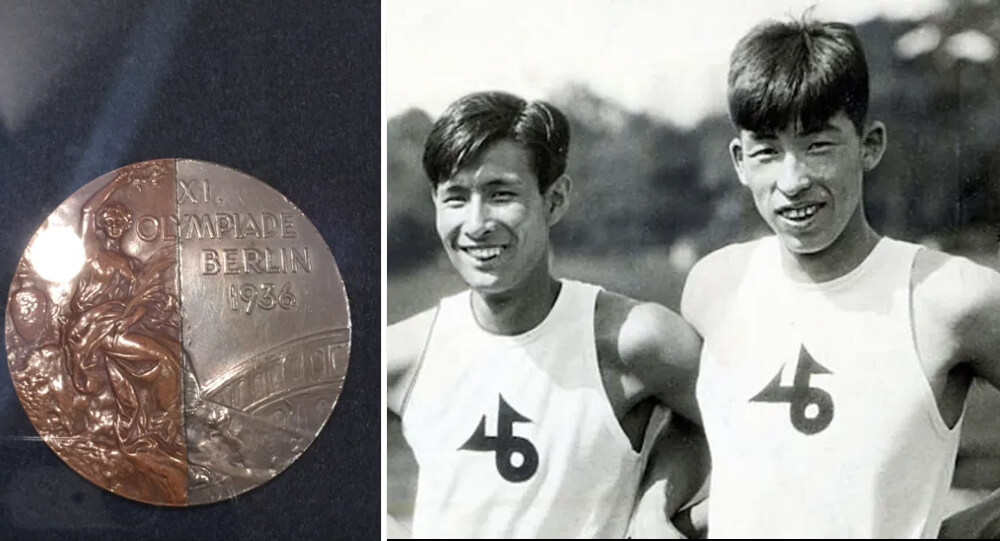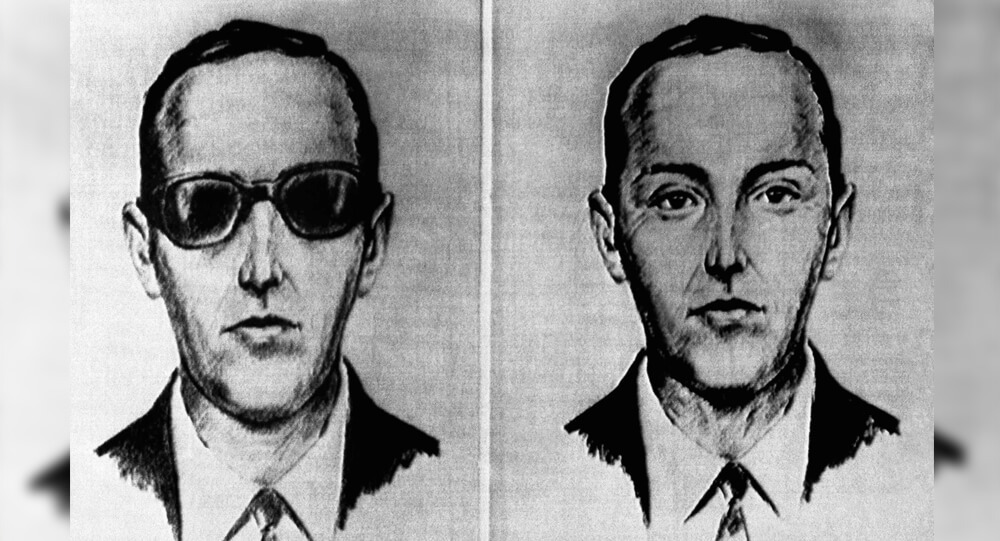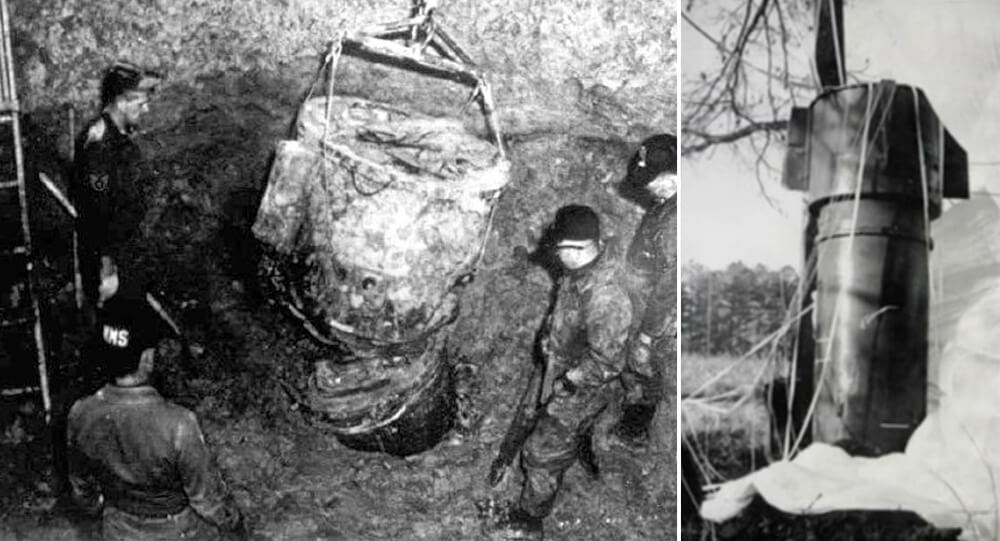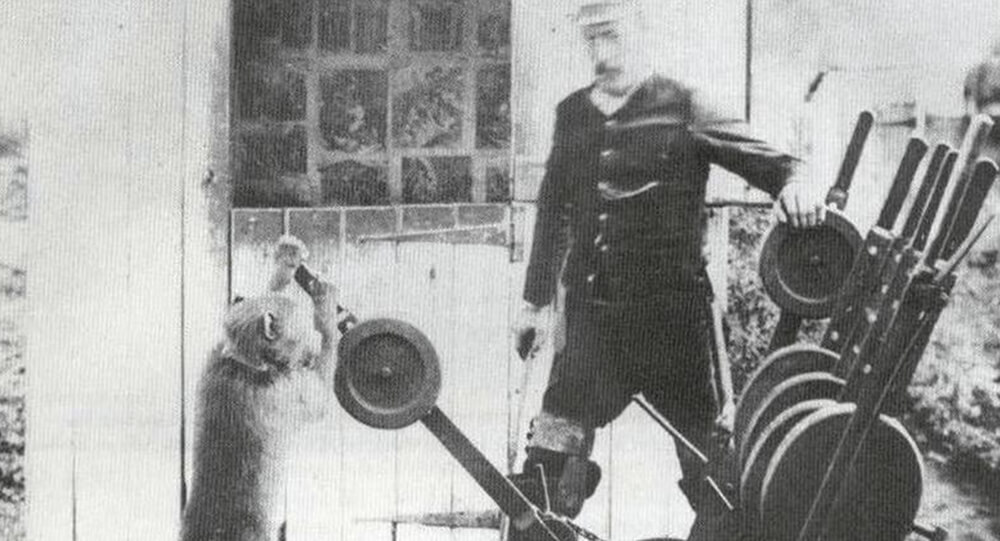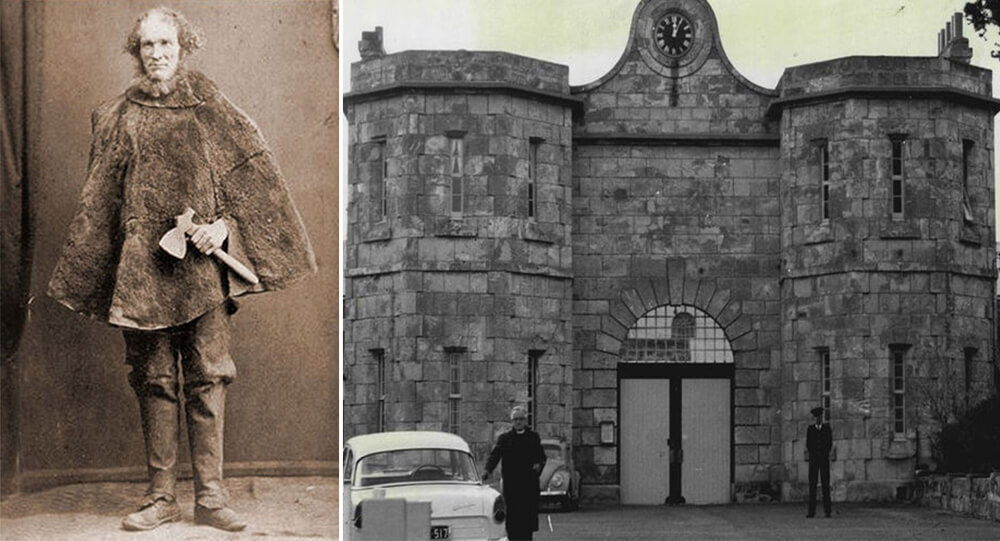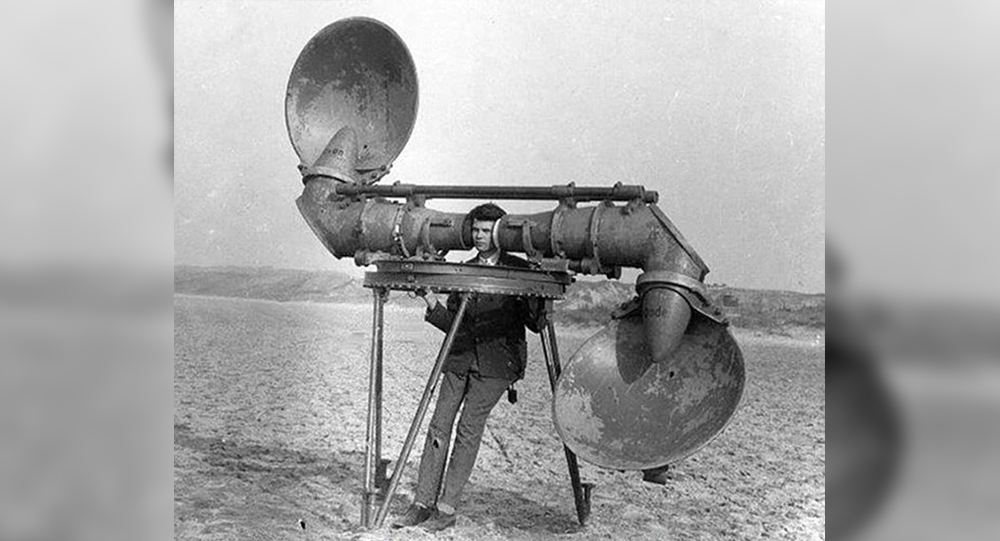

Before Radar: How Giant Acoustic Mirrors Detected Enemy Aircraft in WWI and WWII
In the era before radar technology, a time when aircraft were relatively new but quickly becoming a strategic threat, military forces faced a daunting challenge: how to detect incoming enemy planes at a distance? Visual spotting was limited by weather and line-of-sight, and radio communication technology was still immature. The solution? Acoustic detection—using sound to “see” the sky.
The concept was deceptively simple but massive in scale. Huge concrete or metal structures resembling giant dish antennas or curved walls—known as acoustic mirrors—were built along coastlines and strategic points. Alongside these, horn-shaped sound locators were developed, crafted to gather and focus faint engine noises from tens of kilometers away.
These structures acted as massive auditory amplifiers, allowing specially trained operators to listen through headphones and discern the approach of hostile aircraft, often before they were visible to the naked eye.
How Acoustic Mirrors and Sound Locators Worked
Acoustic mirrors were large, concave concrete surfaces that reflected and concentrated sound waves into a focal point where microphones or listening devices were placed. Typically ranging from 9 to 30 meters in diameter, these mirrors could catch and focus weak engine noises from the sky, much like how a satellite dish amplifies radio signals.
Sound locators were often horn-shaped or parabolic devices, sometimes mounted on swiveling stands, enabling operators to rotate and “point” this giant ear toward suspected aircraft. Operators wore headphones connected to sensitive auditory equipment, listening intently for telltale engine patterns.
By triangulating audio cues between multiple mirrors or sound locators, personnel could approximate the direction and distance of incoming aircraft. Commands could then be relayed to anti-aircraft batteries or fighter squadrons, providing critical early warnings.
Limitations and Challenges: Why Acoustic Detection Had Its Day—and Then Disappeared
Though innovative for its time, the acoustic system came with significant drawbacks:
- Range and Accuracy: Acoustic mirrors worked best in calm weather and over flat landscapes. Wind, rain, and ambient noise often disrupted sound travel, limiting detection range to roughly 20-30 kilometers. Precision in pinpointing exact elevation and speed was poor compared to radar.
- Response Time: Sound travels at approximately 343 meters per second, but aircraft speeds increased rapidly in the early to mid-20th century. By the time the engine noise reached operators, planes could be well within bombing range.
- Fixed Installations: The massive size and permanent nature of these mirrors limited their mobility and strategic placement. They were mostly coastal defenses, not suited for dynamic warfront changes.
- Operator Skill: Effective detection depended heavily on training, hearing acuity, and concentration. Operators had to distinguish aircraft sounds from birds, vehicles, and civilian noise, a difficult and exhausting task.
Despite these challenges, acoustic mirrors represented the forefront of pre-radar technology and served as crucial early-warning devices during World War I and into the early years of World War II.
Historical Impact and Where Acoustic Mirrors Were Deployed
The United Kingdom was a pioneer in building large acoustic mirrors, with installations at locations such as Denge on the Kent coast, near Folkestone. These “listening ears” protected Britain from German air raids during the buildup to WWII. Italy, Germany, and the United States also experimented with similar devices.
While eventually rendered obsolete by the advent of radar in the late 1930s, these imposing structures remain as relics and monuments. Some have survived and become tourist attractions, symbolizing a bygone age of innovation and urgency.
Fascinating Trivia About Acoustic Mirrors and Sound Locators
- The Denge Acoustic Mirrors in England, built in the 1920s and 1930s, include three massive structures, one nearly 30 meters long, often called “listening ears of the coast.”
- In perfect conditions, sound detection could pick up aircraft engines from as far as 20 miles away—remarkably advanced for pre-electronic sensing technology.
- Acoustic mirrors also influenced the design of early parabolic microphones and contributed to the development of sonar and other acoustic technologies.
- The largest acoustic mirror, known as the “Great Ear,” sat on concrete legs and weighed several tons, a testament to the engineering ambitions of the interwar period.
- Acoustic mirrors inspired scientists and engineers to pursue more reliable, long-range detection systems, directly contributing to radar’s development.
The Legacy: Echoes of an Acoustic Past in Modern Technology
Though radar technology rapidly supplanted acoustic detection in military use, the legacy of acoustic mirrors lives on in the fundamental understanding of sound physics applied across fields—from underwater sonar to wildlife tracking.
Their monumental scale offers a tangible link to a time when human ingenuity met looming threats with creative solutions. Today, these stone and concrete “ears” stand as silent witnesses to the evolution of air defense, a blend of architecture, science, and hope.
Final Thoughts: Listening to History
The story of acoustic mirrors and sound locators is a reminder that innovation often steps in before technology catches up. These eerie “ears” reflect a moment in history where human senses were amplified to bridge gaps in security and knowledge.
Before radar lights painted the skies with invisible waves, these colossal listening devices offered the best defense possible—an early warning system built on sound, skill, and hope.
If you find this journey into early air defense fascinating, share it with others and explore how ancient ingenuity paved the way for the technologies we now take for granted.
Sources & Further Reading:
- Royal Air Force Museum: Acoustic Mirrors — rafmuseum.org.uk
- Science & Society Picture Library: Listening Devices, Acoustic Mirrors — sciencesocietygroup.org
- Historic England: The Acoustic Mirrors of Denge — historicengland.org.uk
- Smithsonian Air & Space Museum Archives — airandspace.si.edu
- Journal of Military History: Early Warning Systems and Acoustic Detection in WWI — jmhistoryjournal.com

A Brief History of the PlayStation Gaming Console
Sony's PlayStation was never meant to be an actual product. Instead, it was intended to be a CD-ROM console that would support Nintendo games. However, when Nintendo backed out of the deal at the last minute, Sony went ahead and launched what soon became one of the most successful gaming consoles of all time.

The Littlest Skyscraper: How J.D. McMahon’s 480-Inch Con Fooled Investors in 1919
In 1919, J.D. McMahon convinced investors to fund a 480-foot skyscraper, but he labeled the plans as 480 inches, building a 40-foot structure instead. After taking $200,000, he won in court since the plans matched what he built.

Remembering the 1945 Empire State Building Disaster: When a Plane Met Skyscraper
An airplane crashed into the Empire State Building in 1945. Among other damage, plane parts severed the cables of an elevator and the woman inside fell over 70 stories. She lived and holds the world record for the longest survived elevator fall.

Underground Railroad to Mexico freed thousands of slaves in 1829
Slavery was abolished in Mexico in 1829. Slaves were escaping to Mexico, and slaveholders in the US were aware of this. The US attempted to get Mexico to sign a fugitive slave treaty, which would have required Mexico to send back escaped slaves to the US. But, Mexico refused, arguing that slaves were free as soon as they set foot on Mexican soil.

The touching story of David Vetter (bubble boy), the 'boy who lived in a bubble
David Vetter lived his whole 12 years in sterile “bubble”. He was “outside” for 20 second after being removed from his mother’s womb. He never touched any human.

Did Gil Pérez Really Teleport from Manila to Mexico Overnight? The 1593 Mystery
On October 24, 1593, while performing his guard duties at Manila's Governor's Palace in the Philippines, Gil Perez stopped to lean against a wall and sleep for a while. He opened his eyes to find himself in an unusual environment. Gil was in the Plaza Mayor in Mexico City. They imprisoned Perez, but the authorities in Mexico City decided to release him and return him home.

The History Behind the “No One Dies Alone” Program
In 1986, while doing a night shift at the hospital, Sandra Clarke, a registered nurse, was asked by an elderly patient to stay. She promised to be back after checking on her other patients, but by the time she returned, the gentleman had passed away. Clarke became one of the key figures in launching No One Dies Alone, a program that allows volunteers to sit with terminal patients who have no one else.

Graves holding hands over wall, A Catholic woman and her Protestant husband grave
A protestant man and a Catholic woman who weren't allowed from being buried together in a graveyard in 19th-century Holland turned their graves into a monument showing them holding hands across the wall separating them.

Nathan's Famous Doctor Stunt
When Nathan's Famous Hot Dogs first opened in 1916, the owner hired people to dress as doctors and eat hot dogs outside his shop, to convince people his hot dogs were healthy.

Mother who spent entire life savings for daughter’s cancer treatment won the lottery
A mother won $2 million from a $10 scratch-off lottery ticket after she spent all of her entire life savings to pay her daughter’s cancer treatment. She bought the winning ticket after her daughter’s last cancer treatment.

Hedy Lamarr, A Hollywood actress who also a mathematician and inventor
Hollywood actress Hedy Lamarr was also a mathematician and the inventor of frequency hopping spread spectrum, a technology still used for bluetooth and wifi

Medals of Friendship: The Enduring Olympic Story of 1936
At the 1936 Summer Olympics, two Japanese pole vaulters named Sueo Oe and Shuhei Nishida tied for second, but they declined to compete against each other. As a result, Nishida was awarded the silver medal and Oe won a bronze medal. Upon returning to Japan, the athletes had their medals cut in half and spliced together to create new "friendship medals," which were half silver and half bronze.

Ancient Egyptians Had Pregnancy Tests Over 3500 Years Ago
The ancient Egyptians used a pregnancy test that involved potentially pregnant women peeing on barley and wheat seeds. Plant growth indicated pregnancy: barley for a boy and wheat for a girl. Later tests revealed that pregnant women's urine causes plant growth 70% of the time, whereas non-pregnant women's urine does not.

The World’s First Seismograph: How Ancient China Detected Earthquakes 1,800 Years Ago
Over 1,800 years ago, long before modern technology, the ancient Chinese astronomer and inventor Zhang Heng created the world’s first seismograph in 132 AD. This ingenious bronze device could detect distant earthquakes by releasing small balls from dragons’ mouths into toads’ mouths—each indicating a different compass direction. Its historic detection of an earthquake 400 miles away astonished the imperial court and transformed the way societies understood and responded to seismic events.

The Horrific story of Ariel Castro and the Cleveland abduction
Cleveland abduction victims Gina DeJesus, Michelle Knight, and Amanda Berry were forced to live in Ariel Castro's house of horrors for 10 years. He raped and beat them until they escaped in 2013.

story of the youngest mother in the world at age of five - Lina Medina
Lina Medina, a five-year-old Peruvian girl, became the youngest mother in history in 1939 when she gave birth to a boy.

D.B. Cooper: Man who hijacked a plane and jumped out with a $200,000
On November 22, 1971, DB Cooper hijacked a Boeing 727, drank a whisky, smoked a fag, and then jumped out of the plane with $200,000. He was never again seen.

How Sleep Deprivation Was Once Used as Torture
Sleep deprivation, long before modern interrogation techniques, was considered a “clean” and effective form of torture—leaving no physical scars, yet breaking minds with haunting silence. Victims endured days and nights without rest, leading to vivid hallucinations, disorientation, and psychological torment. This article traces the dark history of sleep deprivation as a weapon, examines the science behind its effects on the brain, and shines a light on the painful balance between human endurance and cruelty in the annals of coercion.

Inside China’s Footbinding Tradition: The Painful Ritual of Lotus Shoes and Bound Feet
In China, Lotus shoes were used to bind women's feet to keep their feet small

15 interesting facts about Queen Elizabeth II
Queen Elizabeth II, who ruled Britain for 70 years, has away at the age of 96. She was the country's longest-reigning monarch. Here are some little-known facts about her.

Why the Word ‘Pen’ Comes from the Latin ‘Penna’ Meaning Feather
The humble word “pen” carries a rich history rooted in ancient times, derived from the Latin word penna, meaning “feather.” Long before modern pens revolutionized writing, feather quills—especially from geese—were the essential tools of scribes, scholars, and artists. This article journeys through the origins of the pen, its evolution, and fascinating trivia about the timeless connection between feathers and writing.

Nuclear bomb accidentally dropped on North Carolina in 196
4 January 1961: The 4241st Strategic Wing's Boeing B-52G-95-BW Stratofortress, serial number 58-0187, was on a 24-hour airborne alert mission off the United States' Atlantic Coast.

Jack the Baboon operated a railroad, earned a living, and never made a mistake
A baboon worked as a signalman for the railroad in the late 1800s. He never made a mistake and worked for the railroad until the day he died.

Moondyne Joe: The story of Australia's most notorious prison escapee
A man named Joseph Bolitho Johns (A.K.A Moondyne Joe) broke out of Australian prisons so many times that the police were compelled to build a special cell just for him. He escaped from that as well.

During the 1996 Olympic bombing, Richard Jewell falsely accused of committing the crime after saving dozens of people
Richard Jewell, an American security guard, discovered a bomb during the 1996 Olympic Games in Atlanta and assisted in the evacuation, but was later wrongfully accused and faced public scrutiny. He was cleared, but it had a lasting impact on him until his death in 2007 at the age of 44.



